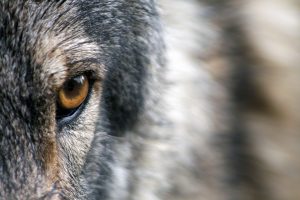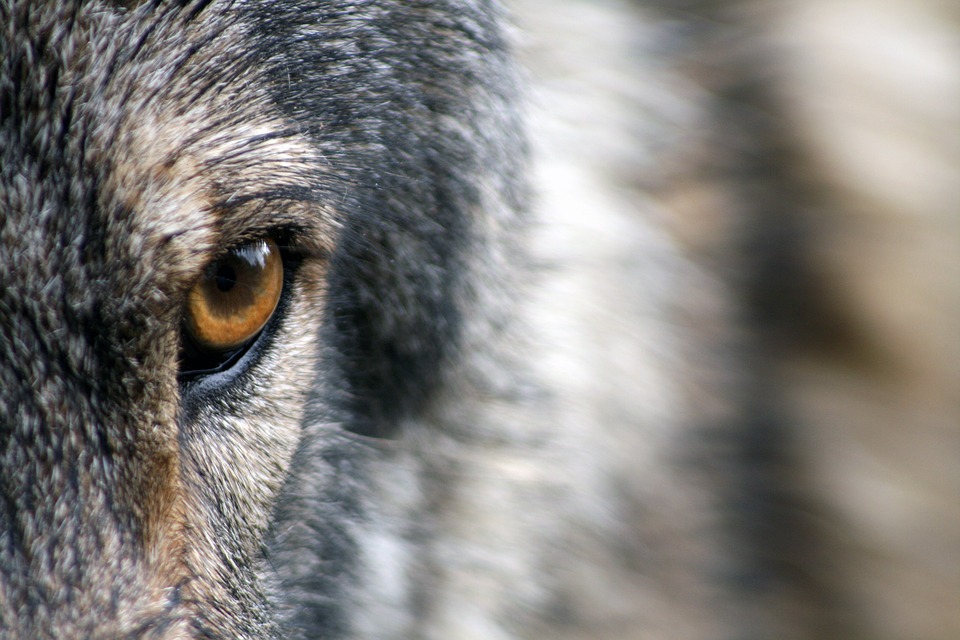
The Alaska Department of Fish and Game killed so many of the radio-collared wolves in a federal study that officials had to cancel the 23-year-old program.
A Department of Interior spokesman confirmed Tuesday that the Yukon-Charley Rivers National Preserve was forced to cancel its annual wolf population survey, which cost the federal government about $100,000 per year, according to the most recent estimates available.
The state of Alaska had shot and killed so many of the radio-collared wolves from helicopters that the study was no longer worth conducting, the spokesman said.
Exact details on how many wolves have been killed and why the preserve made the decision to end the study were not immediately available on Tuesday. Phone calls to the preserve did not connect on multiple tries.
State officials shot and killed wolves outside of the federal preserve as a part of the state’s program to increase the size of a local caribou herd. The Alaska Dispatch News reports that wolves were responsible for 47 percent of caribou calf deaths between 1994 and 2003 and about 80 percent of adult caribou deaths in that same time frame.
According to the National Park Service, the goal of the Alaska program is to increase the population of the caribou herd so hunters may kill more of them.
The wolf study started in 1993 and monitored 12 different wolf packs that traveled in and out of the preserve, which is located in western Alaska.
The state and federal governments have been at loggerheads about the wolves involved in the study previously. In 2014, state officials killed an entire pack of 11 wolves that had been monitored by federal officials for seven years.

Comments
please quit killing the wolves and targeting them…this is getting beyond ridiculous…stop the genocide of the wolf…
Humans have a long history of holding animals accountable for human mistakes. But we cannot continue to hold other animals accountable while also refusing to acknowledge their need to function as autonomous beings. We can never fully understand the minds of other animals. But we do know they are capable of suffering when they are prevented from living as they are meant to. Find a way to co-exist with these wolves!
Hello Nancy, We couldn’t agree with you more!!
Remember this??? WELL ITS ALL TRUE NOW!!! Written 20th July 2016 The United States does not have to be party to the anti-predator mania that infects the wildlife management industry in Alaska. The state adopted an Intensive Predator Management program in 1994, and it’s essentially been treating its moose and caribou like a cattle herd, offering them up to Alaska hunters – both resident and non-resident – and treating native carnivores such as wolves, bears, and wolverines as game thieves.
This isn’t wildlife management – it’s wildlife quackery. Wildlife scientists have proved that predators, such as wolves and grizzly bears, enhance the health of ecosystems and prey populations, mainly taking the weak and the sick. Human hunting and wildlife predation have co-existed for thousands of years. It is not a zero-sum game, where grizzly bears or wolves killing caribou means that hunters do without.
Any decent person should object to Alaska’s wildlife management authorities who allow the aerial hunting of grizzly bears, the hunting of wolves and bears during the denning season or during the lactation period, and trapping of grizzly bears and black bears using cruel steel-jawed leghold traps or wire snares. These are all appalling means of killing predators, and they stack the deck even more against animals who are themselves inedible and who enhance the health of the ecosystems they inhabit. What’s more, from an economic perspective, these native carnivores provide a bounty of revenue for the state, drawing millions of tourists for whom the sighting of a bear or wolf is the experience of a lifetime. The state’s economic analysis on the issue of predator management is upside down, and that’s especially obvious now with so much broad public acceptance of predators and our growing fascination with them.
Congressman Don Young, R-Alaska, and some other politicians in the state insist that Alaska can do what it wants under its state constitution, and that somehow the state has primary authority for wildlife management on all federal lands even though Congress enacted the Alaska National Interests Land Conservation Act in 1980 to designate hundreds of millions of acres as protected parks, preserves, and refuges. ANILCA, signed by President Jimmy Carter in 1980, came long before the state-passed Intensive Management Act. This year, the federal government – which has unambiguous authority to manage federal lands – has proposed two federal rules to stop the worst forms of predator control on 20 million acres of national preserves managed by the National Park Service, and on 76 million acres of national wildlife refuges managed by the U.S. Fish and Wildlife Service.
The arguments advanced by Young and the other politicians in the state are without credence, and banging your fist on a lectern in a committee meeting or on the House floor doesn’t reshape the legal realities or history.
* ANILCA does not grant the State of Alaska any additional authority to manage wildlife on federal lands in Alaska. It expressly provides that “Nothing in this Act is intended to enlarge or diminish the responsibility and authority of the State of Alaska for management of fish and wildlife on the public lands…” 16 U.S.C. § 3202(a). After ANILCA, just like before ANILCA, the federal government has the primary and controlling authority for managing wildlife on refuges in Alaska. The legislative history of ANILCA confirms that Congress both intended for USFWS to retain the responsibility for managing wildlife on federal land in Alaska, and that it may do so in order to protect natural diversity.
* Both ANILCA and the Improvement Act – the 1998 law that reorganized the National Wildlife Refuge System – mandate Alaska’s federal refuge managers to conserve “natural diversity,” a value that USFWS and NPS have correctly noted is incompatible with indiscriminate predator culls.
* Parts of ANILCA encourage consultation and cooperation between the federal government and local, tribal, and state authorities, but nowhere does it give those other authorities veto power over federal management decisions or require consensus.
* Every federal court to consider the question – including the Ninth Circuit, which contains Alaska – has held that States lack the authority to overrule USFWS management decisions concerning federal refuge management.
If, somehow, the federal agencies are wrong, Alaska can sue to nullify the rules. But I think they know that the case law on the issue gives them virtually no chance of prevailing.
This is just misguided rhetoric about states’ rights from public officials pandering to a small segment of people who are ruthless toward animals; it is like a state claiming the right to be the last one to allow cockfighting or bullfighting, and to cite culture or state sovereignty as a justification. Aerial hunting, bear snaring, and killing bears and wolves when mothers are nursing their young are all sickening, unfair, unscrupulous, and murderous means of killing predators. They are at odds with any notion of sportsmanship. They are not supported by Alaskans, according to a statewide poll conducted in February and countless prior ones.
The federal government is exercising proper authority, and common decency, in advancing these rules. If the final appropriations legislation for the Interior Department includes the rider that Don Young got into the House bill, President Obama should veto it. The federal government may not be able to stop this kind of unethical and unsustainable behavior on state or private lands. But it has a duty to stop it on two categories of land where wildlife protection has always been a high purpose and a legal responsibility.
Protect Alaska’s native wildlife »